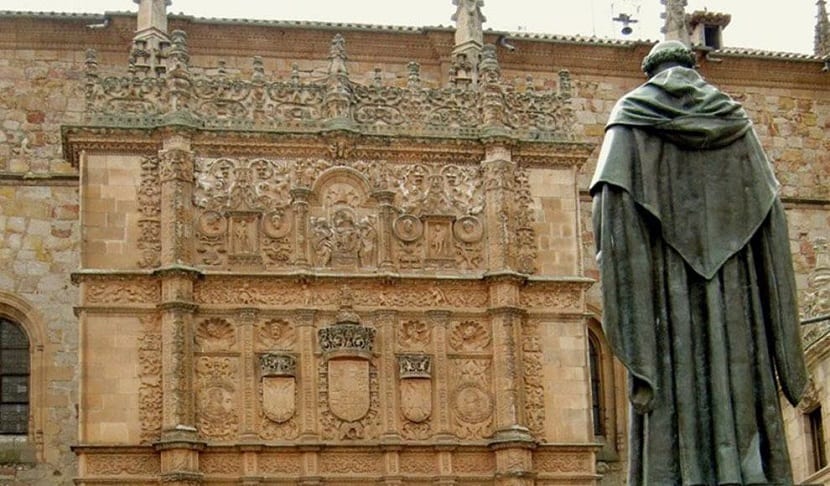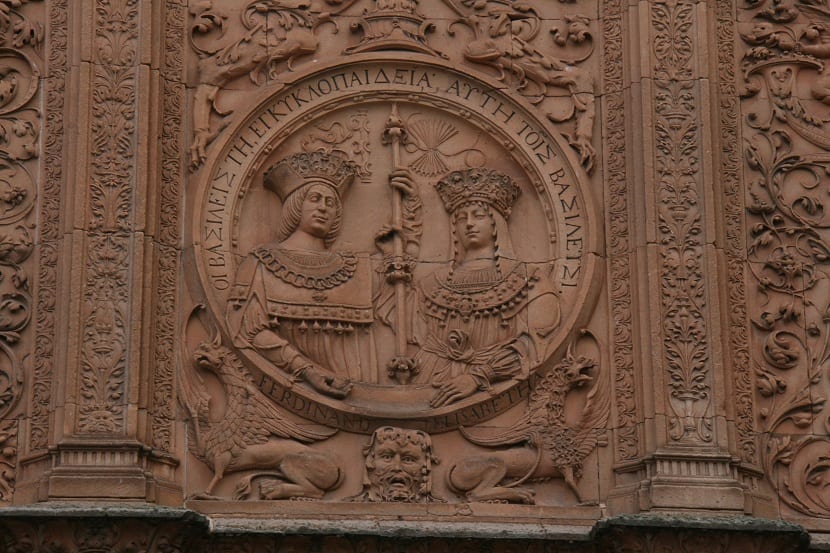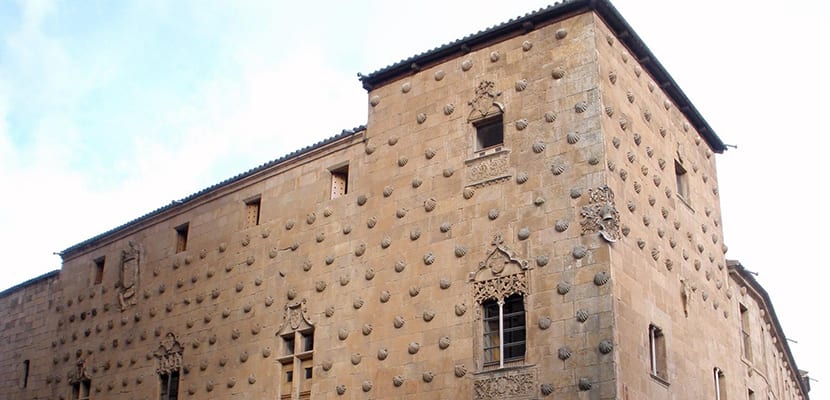
The facade of the University, one of the most photographed places in Salamanca
The University of Salamanca, founded in 1218 by King Alfonso IX of León, is considered the oldest of the Hispanic universities that exist and one of the first to be born in Europe together with Bologna, Oxford or Paris.
On the occasion of its 800th anniversary, we learn about the history of this ancient center of knowledge and its beautiful façade, a masterpiece of Spanish Plateresque art.
History of the University of Salamanca
The monarch Alfonso IX of León was an enlightened man ahead of his time who wanted his kingdom to have higher education. For this reason in 1218 he created the Scholas Salamanticae, nucleus of the current University of Salamanca, for the promotion and transfer of knowledge.
Years later, King Alfonso X established the rules of organization of the university and financial endowments. For his part, in 1255 Alexander IV published the papal bulls that recognize the validity of the degrees that she grants and is also granted the privilege of having his own seal.
The University of Salamanca emerged as an eminently legal university, very much in line with that of Bologna. During the thirteenth and fourteenth centuries, new chairs in Law were created and studies in Theology began to be taught.
This institution took a long time to have its own buildings to teach. Until the XNUMXth century, classes were held in the church of San Benito, in the cloister of the Old Cathedral and in houses rented from the council.
The facade of the University

Image | Digital lance
However, the famous façade of the University of Salamanca that we can see today in the Patio de Escuelas did not begin its construction until 1529. It was commissioned by the Catholic Monarchs and completed by Carlos I.
It is considered a masterpiece of XNUMXth century Spanish Plateresque art thanks to its meticulous ornamentation, the Gothic structures, its shields, ashlars and pediments that enchant all those who have the opportunity to contemplate it.
All its reliefs and figures are carved in Villamayor stone, a famous material from quarries near the city that has also been used to build such famous monuments as the Plaza Mayor or the Casa de las Conchas.
For a long time it has not been known who was the author of the façade of the University of Salamanca but the latest research attributes it to the architect Juan de Talavera although it is also logical that other artists have intervened in a work of this magnitude.
What historical figures can be seen?

Image | Wikipedia
Both the Catholic Monarchs and Carlos I are present on the façade through effigies, their coats of arms or the double-headed eagle, symbol of their empire. On the facade you can also see personalities of the Catholic Church such as a pope and several cardinals. The identity of the pontiff is unknown for sure but many believe that he is Martín V, very relevant in the constitution of this university. However, others believe that it is Pope Luna or Alexander VI.
In addition to all those historical characters, there are countless religious scenes (Cain and Abel) or others of a mythological nature. To all this is added a great decorative, symbolic and heraldic repertoire that can be seen on the façade.
In this labyrinth of figures, do not forget to find a very unique one: the frog on the skull. It is said that the students of the University of Salamanca will not be able to pass if they do not discover it. A secondary decorative detail that has come to steal the limelight from the rest of the façade.
What other places to see in Salamanca?

The visit to the University of Salamanca to learn about its history and its famous façade is just one of the activities that can be carried out in the city, as there are many more to soak up the Salamanca culture.
Slowly but surely, we encourage you to get to know the Plaza Mayor and the cathedral complex. Also the popular Casa de las Conchas, famous for its beautiful cloister and especially for its plateresque façade with Gothic and Mudejar touches, full of shells from Santiago. La Clerecía- Royal College of the Society of Jesus which has been the headquarters of the Pontifical University of Salamanca since 1940. The towers of the Clerecía are an impressive viewpoint of the city and thanks to the permanent exhibition Scala Coeli you can access the top and see all of Salamanca.
We continue the route through the Roman Bridge, the Huerto de Calizto and Melibea and Casa Lis, which houses the Museum of Art Nouveau Art Déco. Then we can continue through the Convent of San Esteban and the Convent of the Dueñas, where we recommend you buy some of the sweets that the nuns cook and recharge after an intense visit.